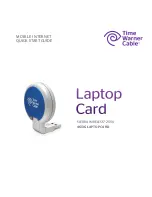
Helpdesk -
31
Protect your computer with security software.
Several types of security software are necessary for basic online security. Security software essentials include
firewall and antivirus programs. A firewall is usually your computer's first line of defense-it controls who and what
can communicate with your computer online. You could think of a firewall as a sort of "policeman" that watches all
the data attempting to flow in and out of your computer on the Internet, allowing communications that it knows
are safe and blocking "bad" traffic such as attacks from ever reaching your computer.
The next line of defense many times is your antivirus software, which monitors all online activities such as email
messages and Web browsing and protects an individual from viruses, worms, Trojan horse and other types of
malicious programs. Your antivirus and antispyware software should be configured to update itself, and it should
do so every time you connect to the Internet.
Integrated security suites such as Norton Internet Security combine firewall, antivirus, antispyware with other
features such as antispam and parental controls have become popular as they offer all the security software
needed for online protection in a single package. Many people find using a security suite an attractive alternative to
installing and configuring several different types of security software as well as keeping them all up-to-date.
A complete version of Norton Internet Security™ is pre-installed on your Gateway system. It includes a
free trial subscription to protection updates. Make sure you Turn it On!
Choose strong passwords and keep them safe.
Passwords are a fact of life on the Internet today; we use them for everything from ordering flowers and online
banking to logging into our favorite airline Web site to see how many miles we have accumulated. The following
tips can help make your online experiences secure:
✓
Selecting a password that cannot be easily guessed is the first step toward keeping passwords secure and away
from the wrong hands. Strong passwords have eight characters or more and use a combination of letters,
numbers and symbols (e.g., # $ % ! ?). Avoid using any of the following as your password: your login name,
anything based on your personal information such as your last name, and words that can be found in the
dictionary. Try to select especially strong, unique passwords for protecting activities like online banking.
✓
Keep your passwords in a safe place and try not to use the same password for every service you use online.
✓
Change passwords on a regular basis, at least every 90 days. This can limit the damage caused by someone who
has already gained access to your account. If you notice something suspicious with one of your online accounts,
one of the first steps you can take is to change your password.
Protect your personal information.
Exercise caution when sharing personal information such as your name, home address, phone number, and email
address online. To take advantage of many online services, you will inevitably have to provide personal information
in order to handle billing and shipping of purchased goods. Since not divulging any personal information is rarely
possible, the following list contains some advice for how to share personal information safely online:
✓
Keep an eye out for phony email messages.
Things that indicate a message may be fraudulent are
misspellings, poor grammar, odd phrasings, Web site addresses with strange extensions, Web site addresses
that are entirely numbers where there are normally words, and anything else out of the ordinary. Additionally,
phishing messages will often tell you that you have to act quickly to keep your account open, update your
security, or urge you to provide information immediately or else something bad will happen. Don't take the bait.
✓
Don't respond to email messages that ask for personal information.
Legitimate companies will not use
email messages to ask for your personal information. When in doubt, contact the company by phone or by
typing in the company Web address into your Web browser. Don't click on the links in these messages as they
make take you to fraudulent, malicious Web sites.
✓
Steer clear of fraudulent Web sites used to steal personal information.
When visiting a Web site, type the
address (URL) directly into the Web browser rather than following a link within an email or instant message.
Fraudsters often forge these links to make them look convincing. A shopping, banking or any other Web site
where sensitive information should have an "S" after the letters "http" (i.e.
https://www.yourbank.com
not
http://www.yourbank.com
). The "s" stands for secure and should appear when you are in an area requesting
you to login or provide other sensitive data. Another sign that you have a secure connection is the small lock
icon in the bottom of your web browser (usually the right-hand corner).
















































